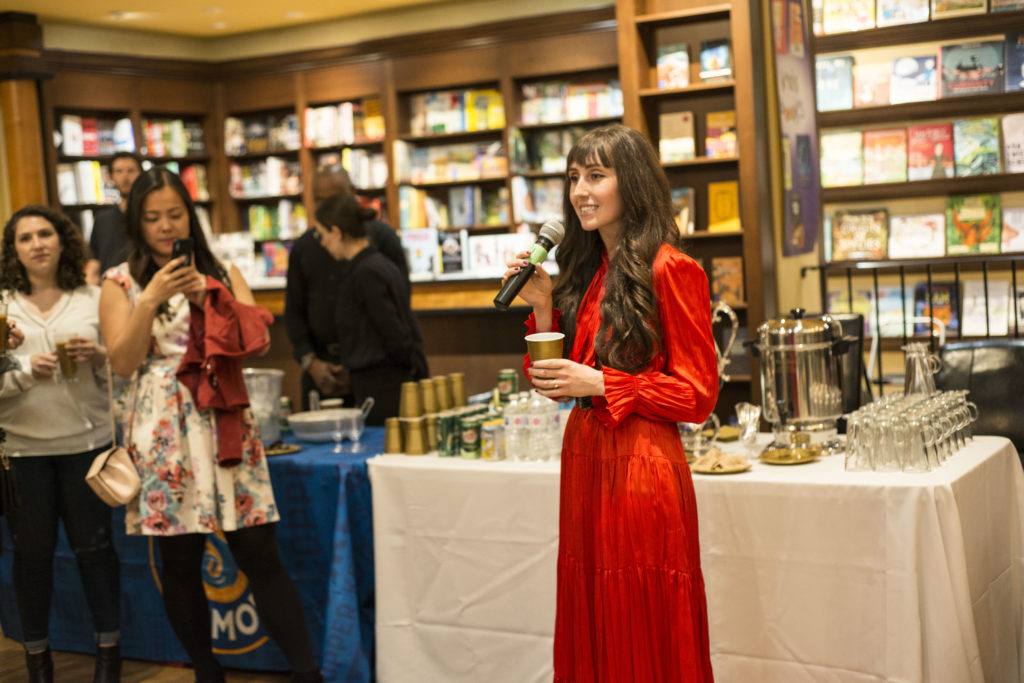
Photo credit: Karrie Kwong
What do you do when you have multiple food allergies, a passion for cooking, writing, photography, and advocating for those with food allergy? For Toronto-based blogger, Amanda Orlando, it’s being a “food creative.”
Amanda, 29, has lived with multiple food allergies since birth. She is allergic to tree nuts, peanut, dairy, soy, most legumes, and has outgrown her allergies to pear, chicken, and egg. She blogs about living well with food allergy and cooking allergen-free on her blog, “Everyday Allergen Free,” with a mission to inspire confidence. Amanda credits her love of cooking to growing up surrounded by delicious food at family gatherings, and spending time with family members who love to cook.
This past spring, Amanda launched her new book called “Everyone’s Welcome.” We spoke with her to learn more about it.
Congratulations on your new book, Everyone’s Welcome. Tell us a little bit about it. Did you create all the recipes? Are they all free of the priority allergens in Canada?
I wanted the book to be bold and welcoming and to promote inclusivity. Everyone these days knows someone with food allergy. I found that there are not too many cookbooks and lifestyle books focused on food allergy, so I wanted to write one that included an attitude component of welcoming anyone into your home.
“Everyone’s Welcome” is not just a book of recipes, but a window into how a person with food allergy lives. It’s relatable and includes sections on managing food allergy anxiety, avoiding cross-contamination, tips on travelling, dining out, hosting guests with food allergy, among others.
There are over 75 recipes in the book, which include original recipes, which I created, and family favourites. All recipes are free from dairy, tree nuts, peanut, egg, soy and shellfish and include a legend showing the absence of a specific allergen.
What prompted you to write this book? What was your mission?

Photo credit: Madeleine Laforest
My dream since forever was to be a “food creative” sharing inspirational recipes showcased with beautiful photos and tied to stories about food allergies. Food brings people together – and is often the centre of gatherings. I wanted to show how, with some planning, everyone can be included.
I was taking photos of food even before social media, and my mom collected recipes and photos of food. There are many family members and relatives who live with food allergy, so I wanted to write a book for myself and family around me. I dedicated the book to my nephew who has food allergy and my niece who has gluten and dairy intolerance.
What are your top tips for cooking allergen-free and avoiding cross-contamination?

In terms of cooking allergen-free, I encourage people to focus on what is fresh, safe, and available, and to create dishes out of those ingredients. It can be distracting or overwhelming when a family is first diagnosed, to try to replicate “normal” kid foods like mac and cheese, or to try to shop in the same way you used to, as reading a lot of labels that are not allergy-safe can be defeating and tiring. It’s about shifting your way of thinking about food and grocery shopping. As you get more comfortable with allergy-safe recipes, you can then try out some “faux” or substitute ideas, like using nutritional yeast instead of cheese. There are some easy swaps to begin with, like Sunbutter instead of peanut butter, or Enjoy Life chocolate instead of milk chocolate.
When it comes to cross-contamination, sanitization is key. If you’re using a shared cooking space or cooking for someone who has food allergy, plan ahead. Being thoughtful and considerate of what you ate during the week and noting which allergens you cooked with in the kitchen and what you used (for example, utensils, the stove, and countertops) is very important so you can properly sanitize and reduce the risk of cross-contamination.
Cooking and entertaining for guests with food allergy can be overwhelming for some hosts. Any tips for them or their guests?
If you’re hosting guests with food allergy, be sure to speak with them before planning what you’re going to cook. Communicate with your guests in advance, so that the both of you are well informed and prepared. If you’re unsure whether a product is free from your guest’s allergens, send them a photo of the label to double check. Sometimes the guest may want to bring their own meal or dish depending on their comfort level.
As a guest, you may feel more confident bringing your own food, so offer to make a dish or help cook. I often prepare and bring my own food to weddings so that I can eat something and focus more on the festivities.
Your book is filled with delicious recipes. Do you have a favourite? Can you walk us through what you eat in a day?
I have so many favourites! I often make my stovetop pulled pork or my seed butter cups.
During the first half of my day, I usually have oatmeal, seeds, and berries or other fruit. For lunch, I often switch it up between tuna or smoked salmon, baked eggs, salad, and pasta with veggies. My go-to snack is a scoop of sunbutter. For dinner, I’ll make veggie fritters, or sweet potatoes with chicken or beef.
Thanks, Amanda, for your insight on cooking and eating allergen-free! We can’t wait to see what you’re cooking up next. Follow Amanda on her food allergy journey at everydayallergenfree.com.
Tags: Amanda Orlando, from the community